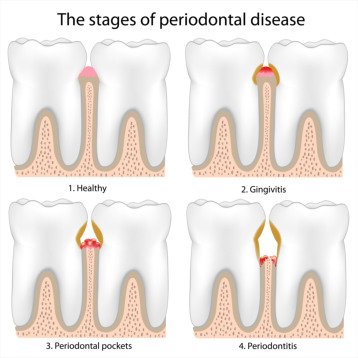Periodontal disease is very common, but many people who suffer from are unaware of the condition until a dentist makes a diagnosis or severe symptoms begin to set in. Unfortunately, the symptoms of periodontal disease can be very subtle, and even silent in its earliest stages. However, there are some warning signs of periodontal disease that can indicate the need for professional intervention. Knowing and identifying symptoms of the disease can lead to early diagnosis, treatment and even reversal of the disease altogether.
Tender or swollen gums - If the gums are swollen or tender to the touch, they may be responding to a bacterial infection. Reddening is another symptom, as healthy gum tissues appear pale pink in hue and are firm to the touch.
Gums that bleed - bleeding gums are one of the most common signs of periodontal disease. Gums may easily and bleed during brushing, flossing or while chewing hard foods. The bleeding is usually minor, but tends to occur on a regular basis.
Difficulty chewing - Chewing food should not be an uncomfortable process. If chewing becomes painful or difficult, it is important to seek attention from a dentist or periodontist.
Bad breath -Bad breath that persists despite regular brushing and flossing can be an indication of periodontal disease. Bad breath is typically caused by a proliferation of bacteria that invade the soft tissues and cause chronic odor.
Changes to the gum line - As periodontal disease begins to advance, it is common to experience changes to the gum line. Gums begin to deteriorate, causing them to recede or pull away from the teeth. Left untreated, this can lead to eventual tooth loss.
Sores or pus -Advanced periodontal disease can cause sores to develop within the mouth, which can be especially uncomfortable. Additionally, pus may begin to seep out along the gum line - a definite indicator of a bacterial infection.



